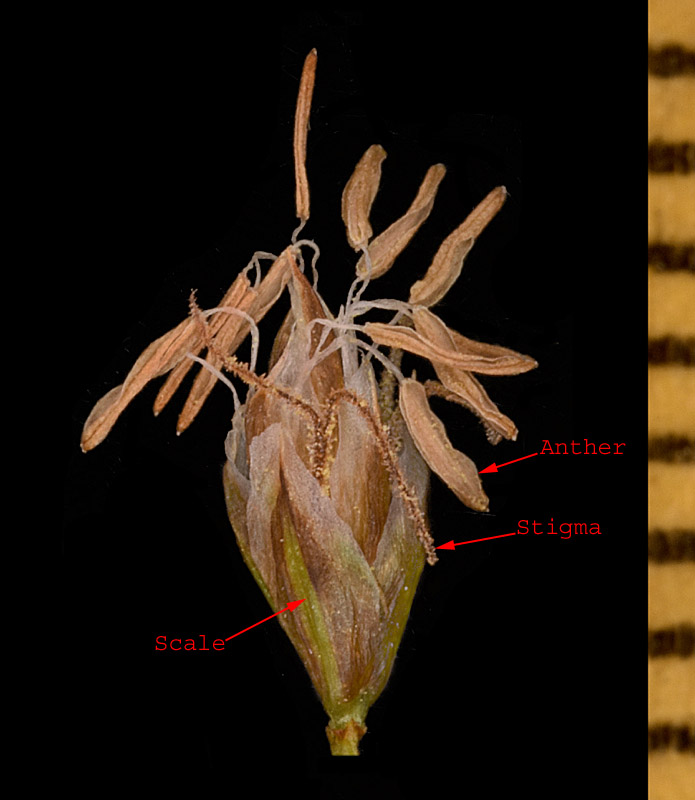 | Duriuscula:
Answers to key questions in Sedges (Carex) of Saskatchewan, Fascicle 3,
Flora of Saskatchewan by Anna Leighton leading to this species. The
answers are in the order you would normally work through the key.
 |
Stigmas 2;
achenes lenticular. NOT [Stigmas 3; achenes three-sided, occasionally
terete, though their shape may be concealed by flattened perigynia] |
 |
Spikes 2
or more per culm, terminal and lateral; spike bracts present on lateral
spikes; lowest spike bracts usually evident, often conspicuous, even in
compact heads composed of densely bunched and indistinguishable spikes
(except in C. maritima, C. chordorrhiza and C.
microptera). NOT [spikes 1 per culm, terminal; spike bracts
absent] |
 |
Individual
spikes distinguishable in an open inflorescence, or indistinguishable in
a compact head; spikes in any one inflorescence alike in appearance due
to their similar composition (i.e. all are gynecandrous, androgynous,
pistillate or staminate), sessile. NOT [Individual spikes
distinguishable in an open inflorescence (densely bunched in C.
bicolor); spikes in any one inflorescence either markedly different
in appearance (with terminal spike staminate and lateral spikes
pistillate), or subtly different in appearance (with terminal spike
gynecandrous and lateral spikes pistillate), sessile or stalked] |
 |
Culms
loosely to densely cespitose (occasionally mat-forming rather than in
discrete clumps); rhizomes, if present, usually short with culms arising
close together along them. NOT [Culms single, or a few together,
well-spaced along conspicuous rhizomes or stolons.] |
 |
Spikes
androgynous, (lateral spikes occasionally pistillate in C. prairea);
if heads have indistinguishable spikes, the heads are usually oblong to
elongate in shape. NOT [Spikes gynecandrous, (terminal spikes may
be staminate in SK material of C. mackenziei; pistillate or
staminate spikes occur in Sect. Stellulatae, a group
distinguished by spongy tissue filling lower one-third to one-half of
the perigynium); if heads have indistinguishable spikes, the heads are
usually +/- as wide as they are long and usually widest in middle or
toward base.] |
 |
Spikes
usually more numerous, mostly overlapping, and in some species
indistinguishable in a simple or compound inflorescence; beak 0.3 mm
long or longer. NOT [Spikes 2-5, widely spaced along 1.5-3 cm of
culm with only upper few clustered at tip; beak a tiny tube less than
0.25 mm long.] |
 |
Inflorescence small,
0.7-1.5 (2) cm long and to 0.7 cm wide, compact with indistinguishable
spikes; leaves 0.5-1 mm wide; culms (0.4) 0.6-2.6 (4) dm high. NOT
[Inflorescence
usually larger, if less than 2 cm long then leaves 2 mm wide or wider;
culms in most species over 3 dm high.] |
|

